
Mudras for Healing
Jack UtermoehlShare
In the practice of yoga, mudras are an energetic and focused tool to enhance and hone our practice. Originating from the Sanskrit word meaning "seal" or "gesture," these hand gestures are more than something to do with your hands. Mudras are pivotal in directing the flow of energy within the body, stimulating areas of the brain, influencing mood, and enhancing meditation and yoga practices.
By using specific hand gestures and finger positions, mudras act as a conduit for healing, reflecting the intricate connection between our physical actions and internal states.
The Healing Power of Mudras
Mudras offer a targeted approach to well-being, touching upon every aspect of the human experience. Beyond their ability to balance the five elements within the body, mudras also play a crucial role in harmonizing the body's energy channels (nadis) and energy centers (chakras). This deeper layer of healing fosters an environment where physical, mental, emotional, and spiritual health can flourish.
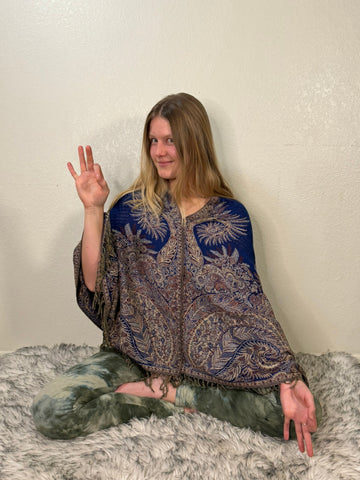
Understanding Nadis
In yogic understanding of the body, nadis are the pathways through which prana, or life force, flows. The body is said to contain 72,000 nadis, with three primary ones: Ida, Pingala, and Sushumna. Mudras help in regulating the flow of energy through these channels, removing blockages, and ensuring a balanced distribution of prana.
- Ida is associated with the moon's energy, influencing the mental processes and cooling the body.
- Pingala is associated with the sun's energy, influencing the body's energy and heat.
- Sushumna runs along the spinal column, serving as the central channel where kundalini awakening occurs.
Engaging with Chakras
Chakras are the energy centers within the body that correspond to specific nerve bundles and major organs. Mudras can activate and balance these chakras, each of which resonates with one of the five elements, influencing various aspects of our being.
- Root Chakra (Muladhara): Related to the earth element, grounding, and stability.
- Sacral Chakra (Svadhisthana): Associated with the water element, creativity, and emotional balance.
- Solar Plexus Chakra (Manipura): Corresponds to the fire element, willpower, and confidence.
- Heart Chakra (Anahata): Connected to the air element, love, and compassion.
- Throat Chakra (Vishuddha): Linked to the ether element, communication, and self-expression.
- Third Eye Chakra (Ajna): Associated with intuition and clarity of thought.
- Crown Chakra (Sahasrara): Related to spiritual connection and enlightenment.
By practicing specific chakra mudras, you can target these chakras, promoting the healing and balancing of physical, emotional, and spiritual issues related to each chakra's domain.
The Principle Behind Mudras for Healing
At their core, hand mudras are based on the principle that the body comprises five elements: earth, water, fire, air, and ether. An imbalance among these elements can lead to disruptions in bodily harmony, manifesting as various health issues.
Mudras serve as a key to rebalance these elements. Each finger represents an element.
- Thumb: Fire (Tejas)
- Index finger: Air (Vayu)
- Middle finger: Space/Ether (Akash)
- Ring finger: Earth (Prithvi)
- Little finger: Water (Apas)
This article seeks to explore the role of mudras for healing as a tool for your wellness. Drawing from firsthand experience and a deep understanding of yoga, we will delve into how integrating yoga hand symbols into your daily life can unlock significant healing benefits.
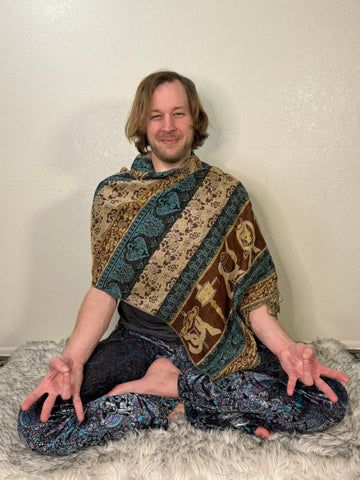
Benefits of Mudras for Healing
Yoga mudras for healing, which are specific hand gestures used in the practice of yoga, have been studied for their potential health benefits. Let’s explore how recent scientific research has shown a clear understanding of how these gestures can impact physical and mental health.
Improving Vital Organ Functioning
Research by Mukhopadhyay (2021) highlights that mudras can stimulate internal energy, enhancing the functioning of vital organs such as the thyroid and pancreas. This can lead to better digestion, weight management, and hormonal balance, contributing to overall health.
Aiding Sleep Apnea Treatment
Kumar et al. (2018) found that yoga, including mudras, can be an effective alternative to physiotherapy for managing obstructive sleep apnea and snoring. This suggests that practicing mudras could help improve sleep quality for those affected by these conditions.
Enhancing Respiratory Function
Palaniappan et al. (2021) demonstrated that lung-specific yoga mudras significantly improve pulmonary function. This finding indicates potential benefits for individuals with respiratory conditions such as asthma and those recovering from respiratory infections.
Reducing Anxiety and Stress
A study by Saraswat & Kumar (2021) showed that practicing the Gyan/Jnana Mudra significantly reduces anxiety levels among young adults. This suggests that mudras can be a useful tool for stress management and mental health improvement.
List of Common Yoga Mudras and Their Associated Benefits
While I have a complete list of yoga mudras, here are a couple of the most common mudras.
Recent research supports the benefits of yoga mudras in improving physical and mental health, including enhancing organ function, aiding sleep apnea treatment, improving respiratory function, and reducing anxiety and stress. With the help of technology, practitioners can further improve their yoga practice and achieve better health outcomes.
Mudras for Healing: Physical Health
Physical well-being is foundational to our overall health and yoga offers a variety of tools to enhance this aspect of our lives. Mudras, with their simple yet powerful connections, can impact our physical health.
Here, we explore three powerful mudras designed to promote physical healing: Prana Mudra, Apana Mudra, and Surya Mudra.

Prana Mudra for Healing
Prana Mudra, also known as the gesture of life force, is a gesture that symbolizes and invokes the life force energy. This mudra is believed to activate the dormant energy in the body, enhancing vitality and strength.
Benefits of Prana Mudra
- Increases vitality and energy levels in the body.
- Enhances overall health and immunity.
- Aids in meditation and concentration.
- Helps in balancing and grounding the body’s energy.
Performing Prana Mudra
- Sit comfortably with your spine erect or in any comfortable meditative posture.
- Join the tips of the thumb, ring finger, and little finger together, while keeping the other two fingers straight.
- Rest your hands on your knees with palms facing upwards.
- Close your eyes and focus on your breath, holding this mudra for 15-30 minutes for maximum benefits.

Apana Mudra for Healing
Apana Mudra is known as the downward-flowing energy seal, effectively supporting the body's excretory and detoxification processes. It harmonizes the downward energy that is essential for elimination and mental release.
Benefits of Apana Mudra
- Helps in detoxification and purification of the body.
- Aids in relieving constipation and promotes healthy digestion.
- Balances menstrual issues and supports reproductive health.
- Reduces bloating and gastric problems.
- Encourages a sense of grounding and stability.
Performing Apana Mudra
- Sit in a comfortable seated position, keeping your back straight.
- Bring the tips of the thumb, middle finger, and ring finger together while extending the other fingers.
- Place your hands on your thighs or knees, palms facing up.
- Maintain this position as you focus on deep, rhythmic breathing for about 15 to 30 minutes.
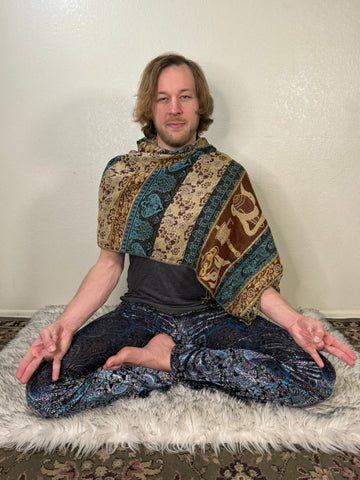
Surya Mudra for Healing
Surya Mudra, or the gesture of the sun, increases the fire element within the body, which is associated with metabolism and digestion. It's a powerful gesture for those looking to balance their inner temperatures and boost their metabolic rate.
Benefits of Surya Mudra
- Aids in improving metabolism and digestion.
- Helps in regulating body temperature and energy levels.
- Can contribute to weight management and reduction of excess fat.
- Enhances vitality and reduces lethargy.
- Supports the balancing of the fire element within the body.
Performing Surya Mudra
- Begin in a seated position with a straight spine.
- Bend your ring finger towards the palm and press it with the thumb.
- Extend the other fingers gently.
- Place your hands on your knees with palms facing downward.
- Hold this mudra for 10-15 minutes while breathing deeply, preferably in the morning to invigorate your day.
Integrating these mudras into your daily yoga practice can lead to significant improvements in your physical health. They serve not only as a complement to your physical yoga postures but also as a standalone practice to enhance vitality, digestion, and overall physical well-being.
Mudras for Healing: Mental Health
Mental wellness is crucial for a balanced life, and yoga offers effective practices to enhance cognitive functions and mental clarity. In this section, we explore mudras for healing that specifically target mental health: Jnana Mudra, Hakini Mudra, and Akasha Mudra.
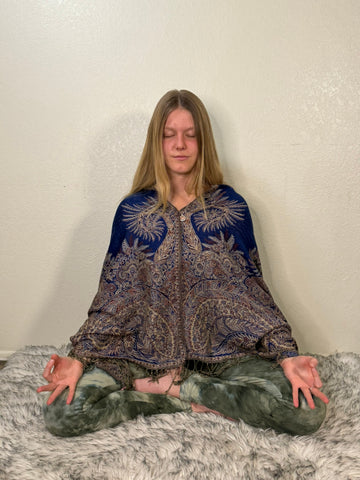
Jnana Mudra for Healing
Jnana Mudra is a classic gesture of knowledge and wisdom. By connecting the thumb and index finger, this mudra symbolizes the unity of universal and individual consciousness, fostering mental clarity and insight.
Benefits of Jnana Mudra
- Improves concentration and mental clarity.
- Enhances the sense of calmness and inner peace.
- Stimulates the root chakra, grounding and centering the mind for meditation.
Performing Jnana Mudra
- Sit in a comfortable seated pose with your spine straight.
- Touch the tip of the thumb and index finger together, forming a circle, while the other three fingers remain straight and relaxed.
- Place your hands on your knees with palms facing upwards.
- Close your eyes and breathe deeply, focusing on the area between your eyebrows. Hold this mudra for 15-30 minutes.
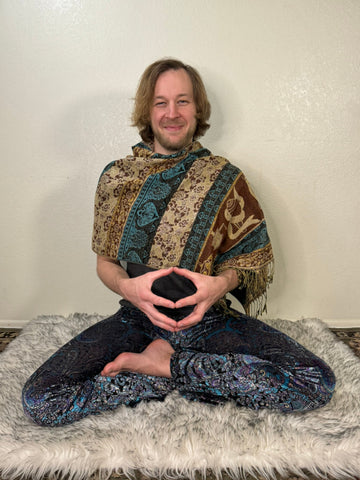
Hakini Mudra for Healing
Hakini Mudra is known for its power to enhance cognitive functions and memory. This mudra, dedicated to the goddess Hakini, brings harmony and balance between the right and left hemispheres of the brain, fostering creativity, concentration, and memory recall.
Benefits of Hakini Mudra
- Enhances memory and cognitive functions.
- Promotes coordination between the left and right brain hemispheres.
- Improves focus and concentration during tasks.
Performing Hakini Mudra
- Sit or stand in a comfortable position.
- Bring your palms together in front of your chest, with fingertips touching lightly.
- Spread your fingers apart slightly.
- Gaze upwards gently, focusing on the space between your eyebrows, and breathe deeply.
- Hold this position for a few minutes, feeling the connection and balance being restored in your mind.
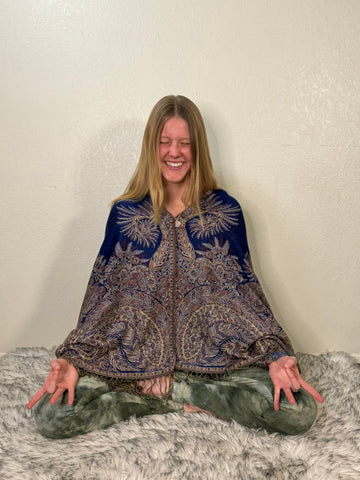
Akasha Mudra for Healing
Akasha Mudra, associated with the element of ether, this gesture of space facilitates openness and space within the mind. This mudra is particularly effective in calming the mind, reducing stress, and detoxifying negative emotional states.
Benefits of Akasha Mudra
- Calms the mind and reduces stress.
- Detoxifies emotional states, promoting emotional balance.
- Enhances the sense of openness and spiritual awareness.
Performing Akasha Mudra
- Sit in a comfortable position with an erect spine.
- Touch the tip of the middle finger to the thumb, while the other fingers remain straight but relaxed.
- Rest your hands on your knees with the palms facing upwards.
- Close your eyes and focus on your breath, allowing yourself to feel the expansiveness within. Practice this mudra for 10-15 minutes daily to achieve a serene state of mind.
Integrating these mental mudras for healing into your life can enhance your mental wellness, concentration, and cognitive abilities. They are simple and powerful tools that support mental health, paving the way for a more focused, clear, and balanced mind.
Mudras for Healing: Emotional Health
Emotional well-being can be difficult to manage, influencing our relationships, mental health, and overall quality of life. Yoga offers practices for emotional healing, among which mudras play a key role.
In this section, we delve into mudras that specifically target emotional healing: Anjali Mudra, Padma Mudra, Karuna Mudra, and Shunya Mudra. These gestures help in balancing emotions, fostering compassion, and promoting emotional stability.
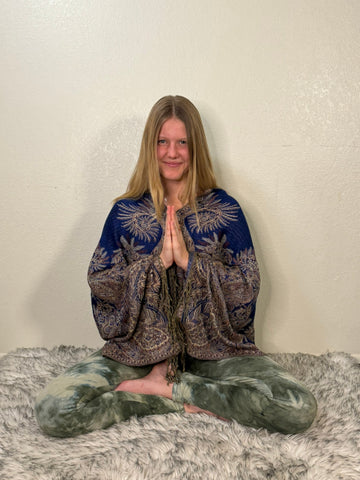
Anjali Mudra for Healing
Anjali Mudra, often associated with respect and gratitude, involves pressing the palms together in front of the heart. This gesture of salutation symbolizes the harmony and balance between the left and right sides of the body and brain, promoting inner calm and emotional balance.
Benefits of Anjali Mudra
- Balances emotions and promotes inner calm.
- Enhances the sense of gratitude and respect.
- Encourages self-acceptance and emotional harmony.
Performing Anjali Mudra
- Sit or stand in a comfortable position, bringing your palms together at the heart center, fingers pointing upwards.
- Gently press the palms together, balancing the pressure evenly.
- Close your eyes and take several deep breaths, focusing on the heart center and the feeling of gratitude or respect.
- Hold this position for a few minutes, allowing yourself to feel a sense of inner peace and emotional balance.
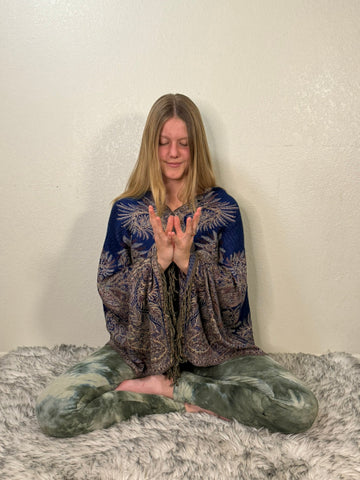
Padma Mudra for Healing
Padma Mudra, resembling a lotus flower, symbolizes purity, lightness, and the opening of the heart. This lotus seal encourages emotional openness, letting go of negativity, and fostering a sense of lightness and purity in emotional states.
Benefits of Padma Mudra
- Encourages emotional openness and lightness.
- Helps in releasing negative emotions and fostering positivity.
- Symbolizes the blossoming of the heart and personal growth.
Performing Padma Mudra
- Sit in a comfortable seated position with an erect spine.
- Place your hands at the heart center, palms touching. Separate your fingers like the blooming of a lotus, keeping the base of the palms and the thumbs touching.
- Breathe deeply and focus on the heart area, envisioning a lotus flower blossoming open, symbolizing emotional growth and openness.
- Hold this mudra for 4-5 minutes.

Karuna Mudra for Healing
Karuna Mudra is a gesture of compassion and understanding. It helps in opening the heart to feelings of empathy towards oneself and others, promoting emotional healing and understanding.
Benefits of Karuna Mudra
- Invokes compassion and understanding.
- Aids in healing emotional wounds and fostering empathy.
- Encourages a deep sense of connection with others.
Performing Karuna Mudra
- Sit comfortably with your eyes closed and focus on your heart center.
- Place both hands on your lap, with the palms facing upwards. Gently form a cup shape with each hand, symbolizing the holding of compassion.
- Visualize compassion flowing from your hands into your heart and out into the world.
- Maintain this gentle focus for several minutes, cultivating feelings of compassion and empathy within yourself.

Shunya Mudra for Healing
Shunya Mudra is effective in reducing anger and emotional instability. This gesture involves reducing the space element, which when in excess, can lead to feelings of anger and frustration.
Benefits of Shunya Mudra
- Reduces anger and emotional instability.
- Promotes a sense of calmness and emotional clarity.
- Aids in overcoming feelings of emptiness and isolation.
Performing Shunya Mudra
- Sit in a quiet place with a straight spine.
- Bend the middle finger towards the palm and press it with the thumb, while the other fingers remain extended.
- Rest your hands on your knees, with palms facing down.
- Close your eyes and breathe deeply, focusing on releasing any feelings of anger or instability with each exhale.
- Hold this mudra for 10-15 minutes.
Integrating these mudras for healing emotional health into your daily practice can contribute to emotional well-being, helping you navigate life's ups and downs with grace and compassion. Each mudra offers a unique pathway to emotional balance, supporting your journey towards a healthy well-being.
Mudras for Healing: Spiritual Health
Spiritual healing is an integral part of wellness, connecting us to something greater than ourselves and fostering a deep sense of peace and purpose. Mudras can be catalysts for spiritual growth, enhancing meditation practices, awakening a sense of unity consciousness, and cultivating fearlessness.
This section explores three mudras that facilitate spiritual healing: Dhyana Mudra, Bhairava Mudra, and Ananta Mudra.

Dhyana Mudra for Healing
Dhyana Mudra is a gesture of deep contemplation and meditation. Traditionally used during meditation to symbolize the perfect balance and harmony of thought, rest of mind, and the universe, it deepens meditation and strengthens the spiritual connection.
Benefits of Dhyana Mudra
- Deepens meditation and enhances spiritual connection.
- Promotes inner peace and facilitates a deeper understanding of oneself and the universe.
- Helps in the attainment of a state of deep stillness and concentration.
Performing Dhyana Mudra
- Sit in a comfortable meditation posture with your back straight.
- Place your hands on your lap, with the left hand underneath, palm facing upwards, and the right hand on top, also palm up, allowing the tips of the thumbs to touch gently.
- Close your eyes and breathe deeply, focusing your mind on the flow of your breath or a point of concentration that suits your meditation practice.
- Remain in this mudra for the duration of your meditation.
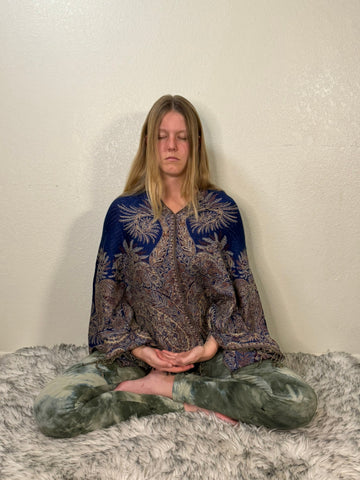
Bhairava Mudra for Healing
Bhairava Mudra is a gesture that invokes the energy of fierceness, a protective aspect of deep meditation. It represents fearlessness and a breaking through of limitations, aiding in spiritual awakening and the dissolution of fear.
Benefits of Bhairava Mudra
- Enhances spiritual awakening and fearlessness.
- Supports the breaking of limitations and the overcoming of personal barriers.
- Cultivates a sense of security and protection during spiritual practice.
Performing Bhairava Mudra
- Sit comfortably with your spine erect.
- Place your hands in your lap with the right hand on top of the left hand, both palms facing upwards.
- Let your hands rest gently in this position, symbolizing the embrace of the outer world by your inner self and the unity of masculine and feminine energies.
- Focus on your breath or a mantra that resonates with you.

Ananta Mudra for Healing
Ananta Mudra, the gesture of infinite consciousness, symbolizes the endless and boundless nature of consciousness. It encourages a realization of unity consciousness, where individual awareness merges with the universal consciousness.
Benefits of Ananta Mudra
- Promotes an awareness of unity consciousness and oneness with the universe.
- Aids in transcending the ego and realizing the interconnectedness of all life.
- Supports spiritual growth and the expansion of consciousness.
Performing Ananta Mudra
- Sit in a quiet and comfortable position, ensuring your spine is straight.
- Hold your hands in front of your heart, with fingers extended and palms facing each other, slightly apart.
- Slowly move your hands apart, envisioning the expansion of your consciousness into the infinite, then gently bring them back, symbolizing the unity of all.
- With each movement, breathe deeply and focus on the sensation of expanding and contracting, representing the endless cycle of creation and dissolution.
- Continue for 5-10 minutes.
By integrating these spiritual mudras for healing into your practice, you can deepen your connection to your spiritual path, enhance your meditation experience, and foster a sense of unity and peace. Each mudra opens a doorway to deeper spiritual insights and growth.
Mudras for Healing: Energetic Health
Energetic healing focuses on balancing and enhancing the flow of life force energy (prana) within the body. Mudras are capable of shifting energy patterns and promoting physical and emotional well-being.
This section explores mudras that specifically target energetic healing: Vayu Mudra, Prithvi Mudra, and Apana Vayu Mudra. Each of these mudras can help in balancing different aspects of the body's energy, from reducing excess to strengthening and stabilizing.

Vayu Mudra for Healing
Vayu Mudra, the gesture of air, is effective in reducing excess air within the body, which can manifest as joint discomfort, bloating, or restlessness. It helps in calming and balancing the air element, promoting relief from various air-related imbalances.
Benefits of Vayu Mudra
- Reduces excess air within the body.
- Relieves joint discomfort and bloating.
- Calms restlessness and nervousness.
Performing Vayu Mudra
- Sit in a comfortable position with your back straight.
- Bend the index finger towards the palm and press it with the thumb, while the other fingers remain straight.
- Rest your hands on your knees with palms facing upwards.
- Maintain this mudra for 10-15 minutes.
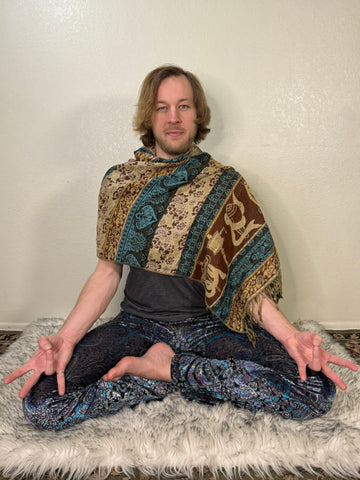
Prithvi Mudra for Healing
Prithvi Mudra, or the gesture of earth, strengthens the body's energy by promoting stability and grounding. It enhances the earth element in the body, which is associated with physical strength, healing, and nourishment.
Benefits of Prithvi Mudra
- Strengthens the body's energy and promotes stability.
- Enhances vitality and encourages healing.
- Promotes a sense of grounding and connection to the earth.
Performing Prithvi Mudra
- Sit in a relaxed position, either on a chair or cross-legged on the floor.
- Touch the tip of the ring finger to the tip of the thumb, applying gentle pressure, while the other fingers remain extended.
- Place your hands on your knees or thighs, with palms facing upwards.
- Hold this position for 15-20 minutes.

Apana Vayu Mudra for Healing
Apana Vayu Mudra, often referred to as the gesture of the heart, specifically targets the heart's energy and circulation. It combines the effects of Apana mudra and Vayu mudra, balancing the heart's energy and improving overall circulation, which can be particularly beneficial for those with cardiovascular concerns.
Benefits of Apana Vayu Mudra
- Balances heart energy and improves circulation.
- Can help in relieving heart-related issues and promoting cardiovascular health.
- Supports digestion and detoxification processes.
Performing Apana Vayu Mudra
- Sit comfortably with your back straight and shoulders relaxed.
- Bend the index finger towards the base of the thumb, touch the tips of the thumb, middle finger, and ring finger together, while keeping the little finger straight.
- Place your hands on your knees with palms facing upwards.
- Focus on your breathing, and hold this mudra for up to 15 minutes.
Integrating these energetic mudras for healing into your practice can enhance your energetic balance, promoting physical well-being and emotional stability. By engaging with these practices, you can tap into the subtle energies of your body.
Wrapping up Mudras for Healing
As we conclude our exploration of mudras for healing, it's clear that these simple gestures offer a gateway to targeted well-being. By integrating mudras into our daily practice, we tap into ancient wisdom that harmonizes the body, mind, and spirit.
Each mudra, with its unique benefits, serves as a tool for self-care, enabling us to address physical discomfort, mental clutter, emotional turbulence, spiritual quests, and energetic imbalances.
Key Points to Remember:
Healing: Mudras offer a non-invasive, accessible way to support healing, addressing physical, mental, emotional, spiritual, and energetic dimensions of the self.
Personal Exploration: The true power of mudras lies in personal experience. I encourage you to explore these mudras, feeling their effects in your own body.
Community Sharing: Your experiences, insights, and questions enrich our community. I invite you to share your journey with mudras below.
Dive Deeper
For those eager to delve deeper into the world of mudras and their myriad benefits, I encourage you to visit our comprehensive list of yoga mudras. Here, you'll find detailed information on each mudra, along with guidance on how to integrate them into your practice effectively.
As we journey together in the pursuit of health and spiritual growth, let us remain open to the power of mudras. Explore yoga mudra decks to assist you on your journey with mudras.
I look forward to hearing about your experiences and insights. Together, let's continue to explore, learn, and grow in our yoga practice and beyond.













1 comment
Love these mudras!